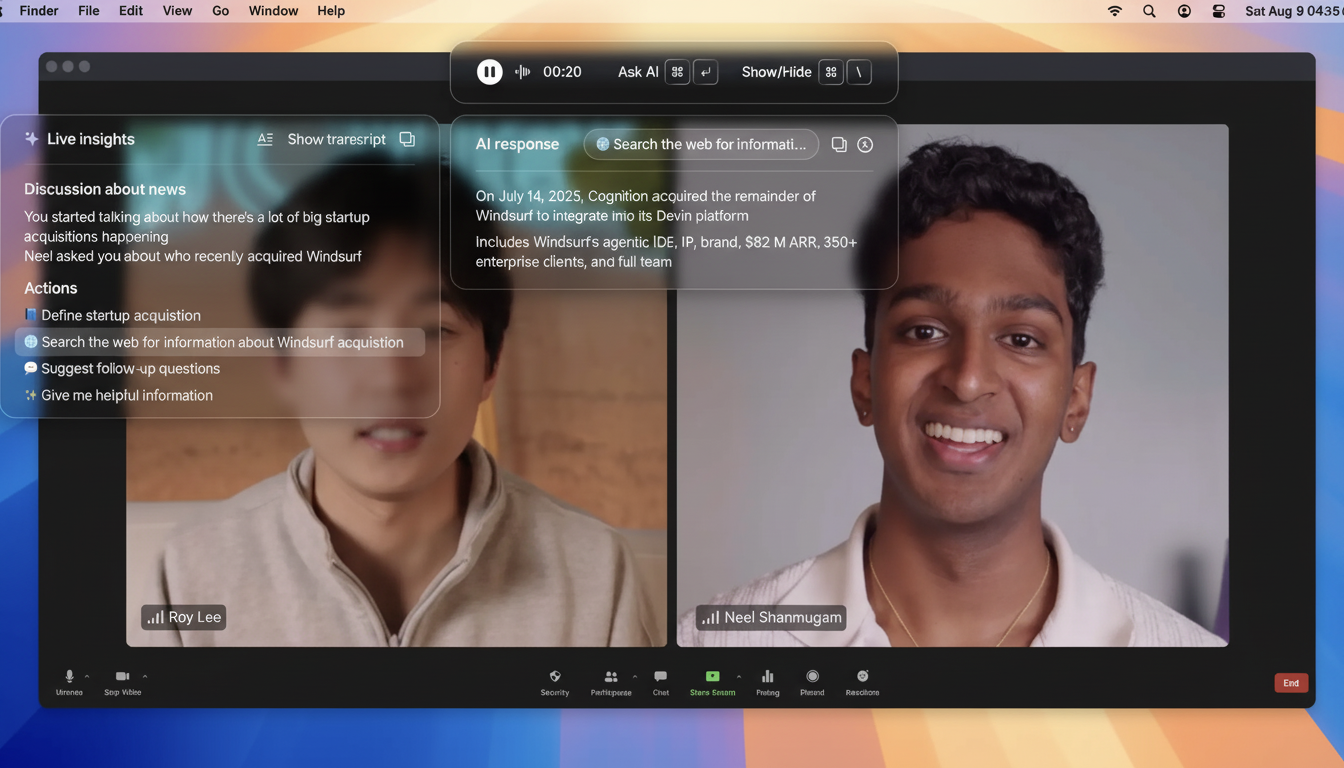Roy Lee, the co-founder and CEO of Cluely, is set to take the stage at Disrupt 2025 with a promise to unpack one of the hardest problems in tech right now — how to stand out when everyone is shipping AI. Expect candid lessons from a founder who’s turned attention into a growth engine, and a look at why distribution, voice, and narrative can matter more than yet another model upgrade.
Cluely bills itself as an AI meeting assistant that surfaces real-time insights and converts conversations into searchable, shareable reports. The category is crowded, but Lee’s path has never been about feature checklists. Backed by a $15 million Series A led by Andreessen Horowitz, Cluely has invested as heavily in content, creators, and brand theater as it has in product — a deliberate bet that in AI’s consumerization wave, attention compounds like capital.

Why Attention Is Beating Features in AI Today
There are hundreds of AI notetakers, copilots, and meeting bots vying for the same users; listings on software marketplaces like G2 and product directories swell with near-identical pitches. In such markets, differentiation rarely comes from marginal gains in transcription accuracy or summarization speed. It comes from being memorable and easy to try — a reality supported by growth data showing that top-of-funnel visibility and frictionless onboarding often drive more repeat usage than incremental feature depth in early-stage apps.
Analysts have also noted that marketing noise has outpaced meaningful product signal across generative AI categories. Gartner’s hype cycle framing has long warned that over-saturated narratives create discoverability challenges; meanwhile, product analytics benchmarks from firms like Amplitude show that productivity apps frequently struggle to clear even 25–30% week-one retention, underscoring how quickly users churn when the value proposition isn’t vivid or immediate.
The Cluely Playbook for Distribution-First Growth
Lee’s strategy centers on distribution-first building. Cluely pairs frequent product drops with a drumbeat of creator-led storytelling, high-concept launch videos, and deliberately provocative messaging that sparks comment threads — and, crucially, trials. The company has reportedly staffed dozens of content creator interns and runs an in-house studio to iterate formats the way others iterate features.
The result is a brand that behaves more like a media company than a SaaS vendor. Features are framed as stories. Product roadmaps are narrated publicly. And every release has a clear social call to action, compressing the gap between seeing the message and experiencing the app. For a meeting assistant, that means live demos of real-time insights, shareable auto-reports, and collaboration hooks that show up as artifacts in team workflows.
Controversy as Calculated Growth, Not a Gimmick
Lee’s rise has been fueled, in part, by content that courts debate. Early viral posts documented his experimentation with AI during job interviews and leaned into a “cheat on everything” ethos designed to provoke. The approach mirrors a well-documented platform dynamic: research from Yale psychologists found that moral-emotional language can lift sharing rates by roughly 15–20%, a reminder that outrage and surprise are algorithm-friendly emotions.

That playbook is not without risk. Brand safety considerations, policy scrutiny, and user trust can all suffer if provocation isn’t anchored in a real product payoff. The difference between gimmick and strategy is whether the controversy converts — to installs, to teams adopting the workflow, and to retention that proves the message didn’t overpromise. Expect Lee to address where he draws the line and how Cluely keeps the core utility — accurate notes, useful indexing, team sharing — front and center.
Metrics That Matter on Stage: Beyond Vanity
Founders in the room will listen for concrete mechanics. How does Cluely measure the ROI of attention beyond vanity metrics? Lee has previously emphasized share of voice, earned media value, and creative testing velocity, but the telling indicators are activation and depth: the share of new users who complete a full meeting flow within 24 hours, how many teams share auto-generated reports weekly, and the accuracy rates users attribute to AI summaries compared with human notes.
There’s also an operational angle. Building a creator engine inside a startup means editorial calendars, production sprints, and feedback loops tied to product telemetry. The most effective content often mirrors customer objections — privacy, reliability, and fit with tools like Google Workspace and Microsoft 365 — which in turn informs roadmap priorities and partnerships.
What Founders Can Learn from Cluely’s Approach
The takeaway isn’t that every startup should provoke. It’s that clarity travels faster than complexity. A distinct point of view, expressed consistently and tested like a product, can lower acquisition costs and compress time-to-value. When tied to a real workflow — in Cluely’s case, making meetings more searchable and shareable — that attention can become durable adoption rather than fleeting impressions.
Disrupt 2025 will offer a timely case study from a founder operating at the center of the AI hype cycle and using it to his advantage. If Lee delivers the specifics — what he measures, what he refuses to do, and how he builds guardrails around responsible AI — the session could be a blueprint for cutting through noise without losing the plot: ship utility, package it with conviction, and let distribution do compounding work.

